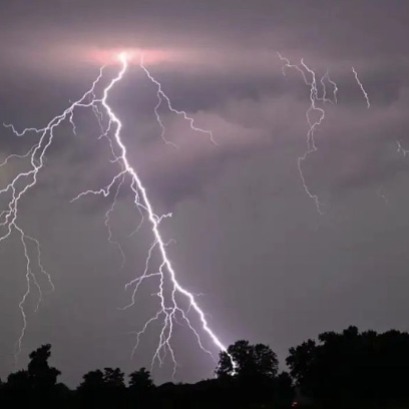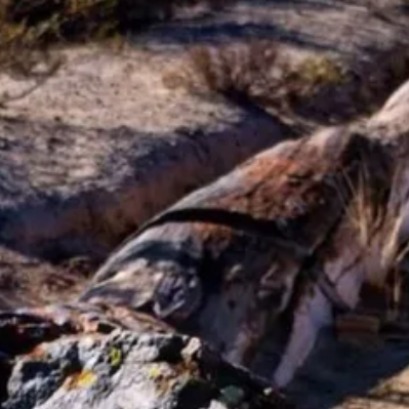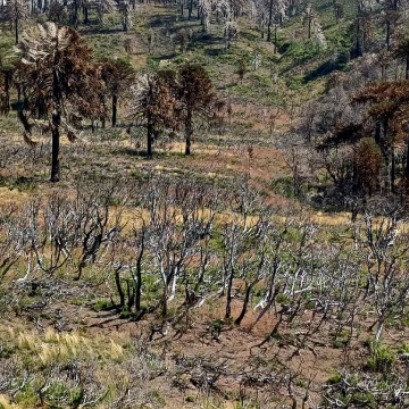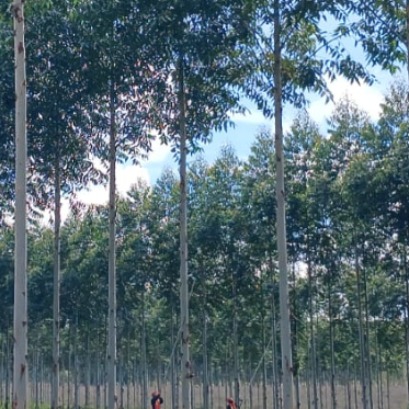
320 million trees die every year due to ray fall
Researchers from the Technical University of Munich (TUM) have developed new calculation models that, for the first time, estimate the global influence of rays in forest ecosystems.
According to its findings, published in Global Change Biology, it is estimated that 320 million trees die each year due to the fall of rays.Tree losses caused by forest fires caused directly by rays are not included in these figures. In the future, the mortality of light -induced trees could increase due to the increase in the frequency of flashes.Damage caused by rays in forests are usually difficult to detect and have only been systematically studied in a few places. Until now, it was not known with certainty how many trees die every year around the world due to direct damage to rays. The TUM research team has developed the first method to estimate how many trees are so severely affected by rays that finally die. Its conclusion: the ecological impact of the rays has underestimated.While the previous studies focused on field observations in individual forests, TUM researchers adopted a mathematical approach. They expanded a widely used global vegetation model by integrating observational data and global patterns of rays.Now we can not only estimate how many trees die annually by rays, but also to identify the most affected regions and evaluate the implications for global carbon storage and forest structure, explains in a statement Andreas Krause, principal author of the study and researcher of the chair of interactions Earth-Atmosphere surface.The 320 million victims every year of the rays represent between 2.1 % and 2.9 % of the total annual plant biomass loss. It is estimated that this biomass decomposition issues between 770 and 1,090 million tons of CO2 per year.The researchers emphasize that these emissions are surprisingly high: their magnitude is comparable to that of approximately 1,260 million tons of CO2 that are released annually due to the combustion of live plants in forest fires. However, total CO2 emissions of forest fires are substantially higher (around 5,850 million tons per year), since they also include the burning of dead wood and organic matter of the soil. More in the futureThe 320 million victims every year of the rays represent between 2.1 % and 2.9 % of the total annual plant biomass loss. It is estimated that this biomass decomposition issues between 770 and 1,090 million tons of CO2 per year.The researchers emphasize that these emissions are surprisingly high: their magnitude is comparable to that of approximately 1,260 million tons of CO2 that are released annually due to the combustion of live plants in forest fires. However, total CO2 emissions of forest fires are substantially higher (around 5,850 million tons per year), since they also include the burning of dead wood and organic matter of the soil. Most climatic models project an increase in rays frequency in the coming decades, so it is convenient to pay more attention to this disturbance, largely ignored, says Krause.Currently, the mortality of ray -induced trees is greater in tropical regions. However, the models suggest that the ray frequency will increase mainly in the regions of medium and high latitudes, which means that ray mortality could also charge greater relevance in temperate and boreal forests.
IT MAY INTEREST YOU
 The forest of the oldest shadows: the story of the petrified trees
The forest of the oldest shadows: the story of the petrified trees
One of the natural treasures of Río Negro turns 23 years old under the protection law that allows its conservation. Where it is and how it was formed. Río Negro celebrates 23 years of conservation in the petrified forest as a Protected Natural Area (ANP). It is a space of 625 hectares that protects an exceptional site of fossil trunks that date back more than 60 million years.
 Specialists from 10 provinces develop forest landscape restoration strategies throughout the country
Specialists from 10 provinces develop forest landscape restoration strategies throughout the country
The program is developed by researchers from INTA, Conicet and the Argentine Wildlife Foundation.
 Paraguay | The plantations became instruments of territorial development and the generation of decent employment, INFONA highlights.
Paraguay | The plantations became instruments of territorial development and the generation of decent employment, INFONA highlights.
Plantings in different phases, control of ants and weeds, pruning and thinning, mechanized harvest, technology applied to the field and complete integration of the production cycle were part of the CREA Forestal proposal in its Technical Update Conference – JAT Forestal 2025. The event took place on Friday, November 14, at Estancia Ñemity, located in San Juan Nepomuceno, Caazapá, where agricultural producers, technicians, contractors, students and companies in the sector met to observe the forestry business of the future in action.





















